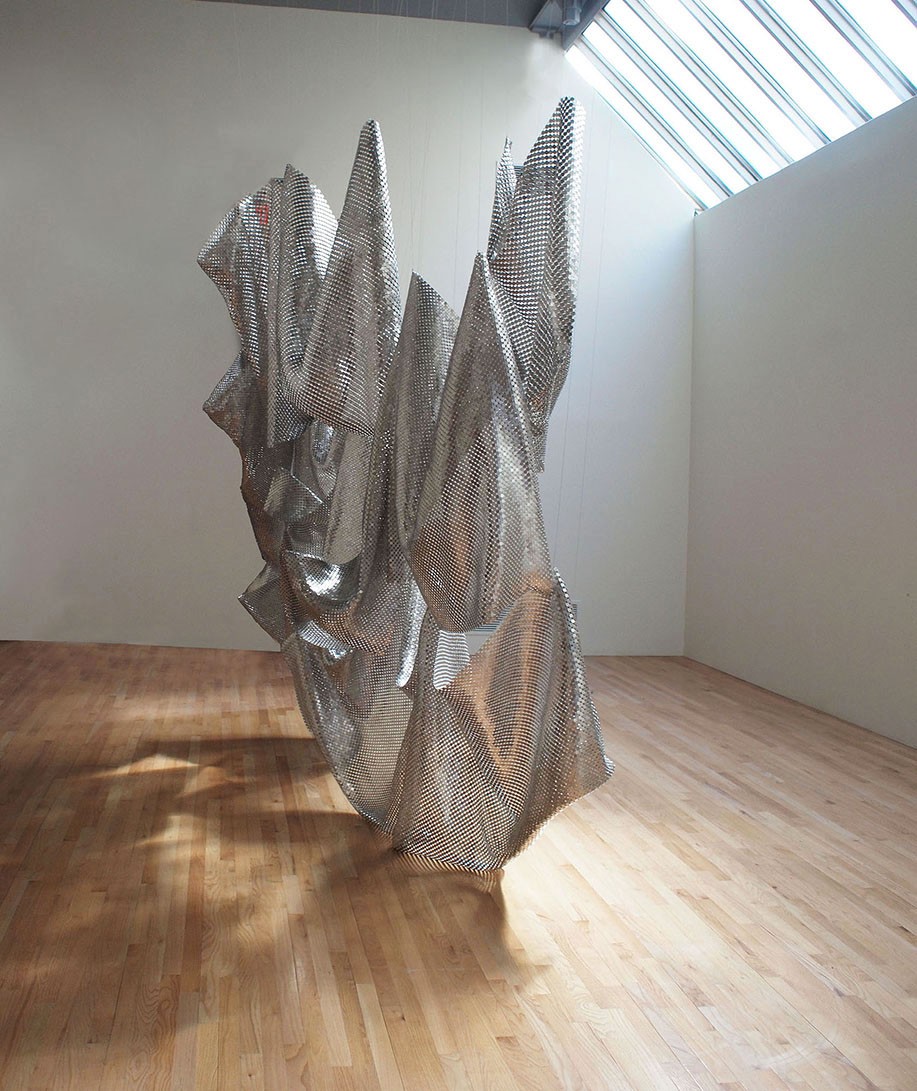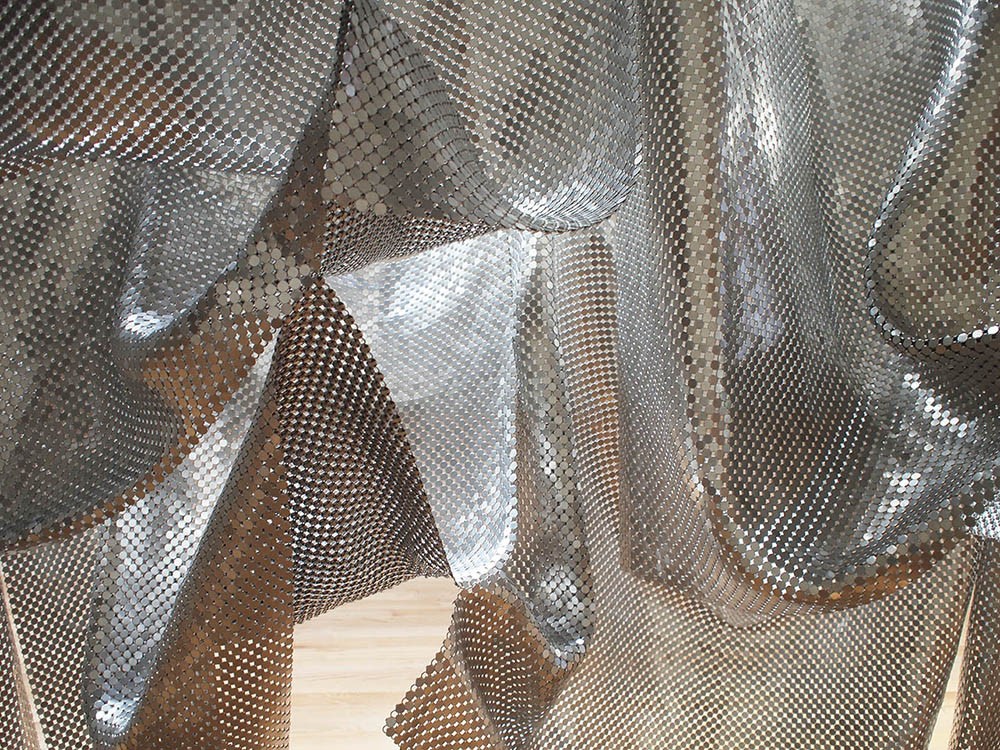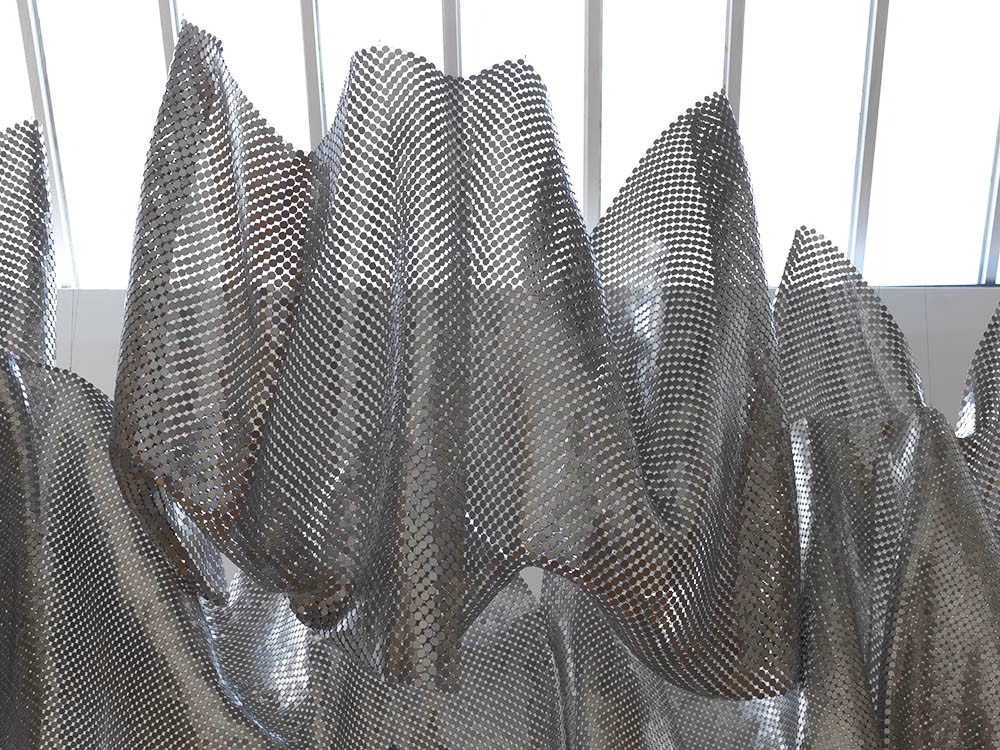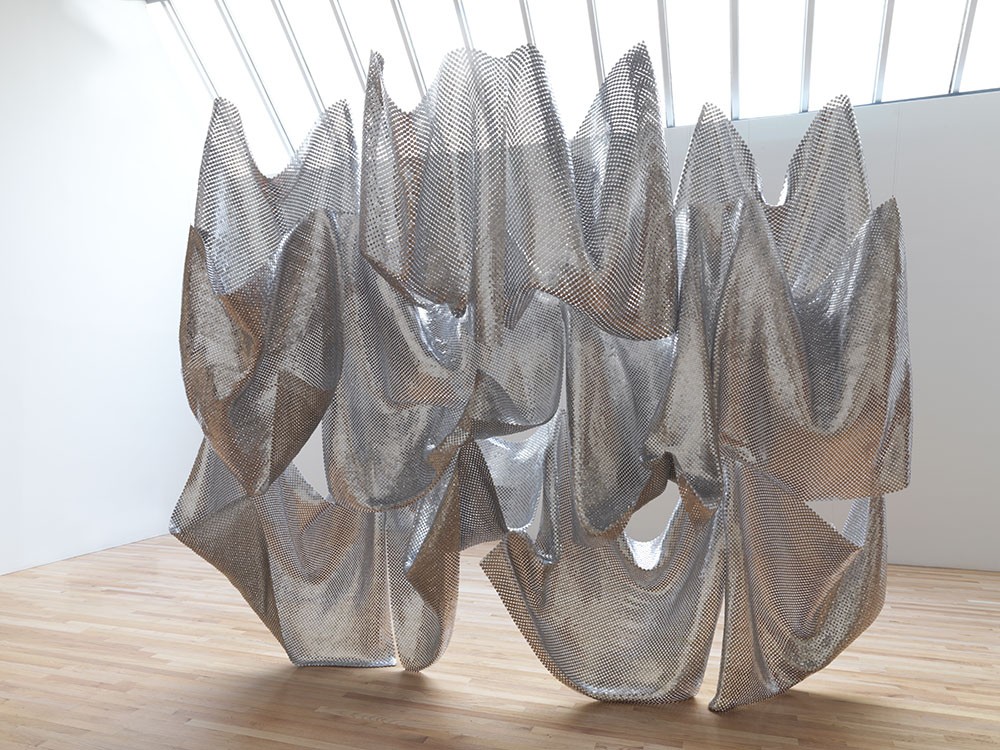




Plane Weave, 2016
Solo exhibition at the Philadelphia Academy of Fine Art, Philadelphia, PA
April 20 - August 7, 2016
Punched aluminum and stainless steel rings.
h. 120 in x w. 169 in x d. 36 in (304 x 429 x 92 cm)
Commissioned by the Philadelphia Academy of Fine Art
All photos by Barbara Katus
The title Plane Weave refers to the woven nature of its construction. In rethinking the idea of metal sculpture, I wanted to make something flexible and translucent instead of solid and heavy. "Plain weave" is the most basic woven design: over/under, but this sculpture is made up of connecting planes in the geometric sense. The planes start two dimensionally but become three dimensional as they respond to gravity, space, tension, weight and materiality. In addition, the work responds continuously to the changing natural light - at some times of day appearing to be very solid and opaque and at other times translucent and screen like.
Press Release
The Pennsylvania Academy of the Fine Arts (PAFA) is thrilled to present Alyson Shotz: Plane Weave, on view April 21 through August 7, an installation that marks the unveiling of a large sculptural work commissioned by PAFA and making its public debut.
"Alyson Shotz is known for work that seeks to understand the physics of space through sculpture," says Jodi Throckmorton, PAFA's Curator of Contemporary Art. "Her art bridges disciplines by connecting science and mathematics with the visual arts and by using non-traditional materials like glass beads or stainless steel wire to build often immense abstract sculptures."
The centerpiece of the installation is Shotz's tapestry-like sculpture, commissioned by PAFA and composed of thousands of laser-cut aluminum octagons of the artist's design that are connected by hand. A deep investigation into the work of light and gravity on the way that materials function in space, this new work also reflects upon the repeating patterns found in nature.
"While in many ways this acquisition charts a new direction for PAFA's sculpture holdings by expanding to abstract pieces, Shotz's work fits well with pieces in the collection that represent the history of minimalism and contemporary takes on these ideas," Throckmorton says. "Additionally, PAFA is committed to collecting the work of important female artists and Shotz is one of the most influential artists working today."
Shotz worked with PAFA students on the making of some elements of the sculpture, which is suspended from PAFA's Morris Gallery ceiling and appears to change from translucent to opaque and from a reflective screen to a solid object in response to the shifts in light.
The work conjures the natural world (the sun on rippling water), as well as the digital (computer pixels). These ideas represent an exciting new direction in Shotz's work, as she furthers her interests in creating large volumes out of small mass and allowing the shape of the work to be determined by gravity and other forces outside of her control.
Shotz allows the material to be flexible -- draping and gathering like fabric -- rather than rigid. While Shotz is deeply connected to the history of sculpture through the questions that she asks in her work, she simultaneously is challenging ideas in modernist sculpture.
The artist explains, "The title Plane Weave refers to idea that this sculpture is related to the woven structure. 'Plain weave' is the most basic woven design -- over/under -- but my sculpture is made up of connecting planes in the geometric sense. My planes start two dimensionally but become three dimensional as they respond to gravity, space, tension, weight and materiality."
Shotz received her BFA from the Rhode Island School of Design in 1987 and her MFA from the University of Washington, Seattle in 1991. Her work has been exhibited at The Phillips Collection in Washington, D.C.; Espace Louis Vuitton in Tokyo; the Solomon R. Guggenheim Museum in New York; Art Basel in Switzerland; among many others. She has done numerous large-scale, site-specific commissions and her most recent solo exhibition Force of Nature was on display at the Wellin Museum in Clinton, New York, and traveled to the Halsey Institute of Contemporary Art in Charleston, South Carolina.